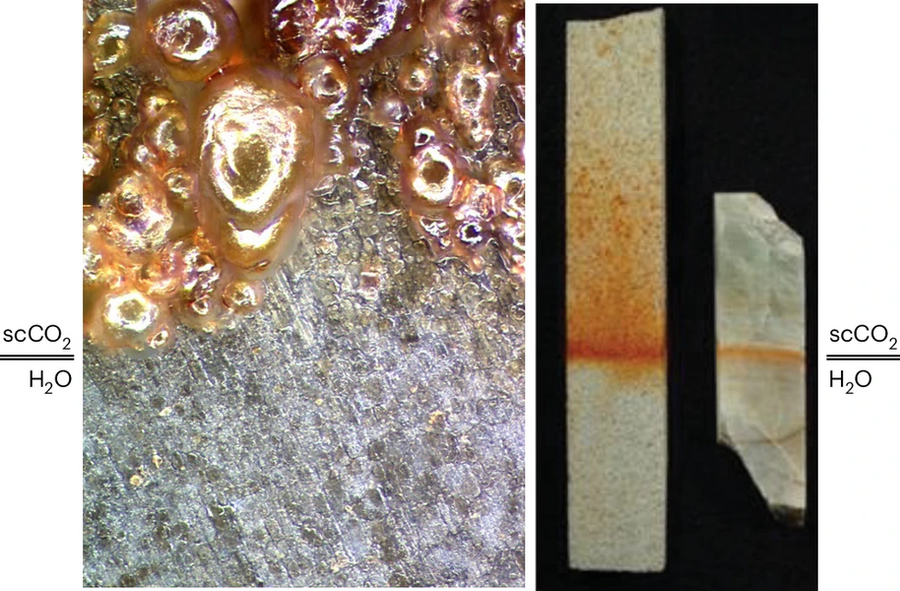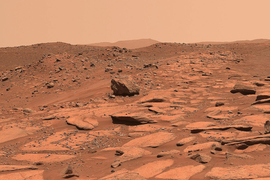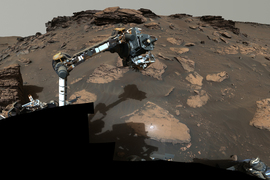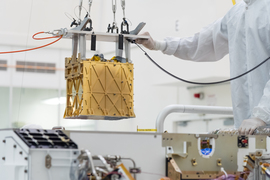Dry river channels and lake beds on Mars point to the long-ago presence of a liquid on the planet's surface, and the minerals observed from orbit and from landers seem to many to prove that the liquid was ordinary water.
Not so fast, the authors of a new Perspectives article in Nature Geoscience suggest. Water is only one of two possible liquids under what are thought to be the conditions present on ancient Mars. The other is liquid carbon dioxide (CO2), and it may actually have been easier for CO2 in the atmosphere to condense into a liquid under those conditions than for water ice to melt.
While others have suggested that liquid CO2 (LCO2) might be the source of some of the river channels seen on Mars, the mineral evidence has seemed to point uniquely to water. However, the new paper cites recent studies of carbon sequestration, the process of burying liquefied CO2 recovered from Earth’s atmosphere deep in underground caverns, which show that similar mineral alteration can occur in liquid CO2 as in water, sometimes even more rapidly.
The new paper is led by Michael Hecht, principal investigator of the MOXIE instrument aboard the NASA Mars Rover Perseverance. Hecht, a research scientist at MIT's Haystack Observatory and a former associate director, says, “Understanding how sufficient liquid water was able to flow on early Mars to explain the morphology and mineralogy we see today is probably the greatest unsettled question of Mars science. There is likely no one right answer, and we are merely suggesting another possible piece of the puzzle.”
In the paper, the authors discuss the compatibility of their proposal with current knowledge of Martian atmospheric content and implications for Mars surface mineralogy. They also explore the latest carbon sequestration research and conclude that “LCO2–mineral reactions are consistent with the predominant Mars alteration products: carbonates, phyllosilicates, and sulfates.”
The argument for the probable existence of liquid CO2 on the Martian surface is not an all-or-nothing scenario; either liquid CO2, liquid water, or a combination may have brought about such geomorphological and mineralogical evidence for a liquid Mars.
Three plausible cases for liquid CO2 on the Martian surface are proposed and discussed: stable surface liquid, basal melting under CO2 ice, and subsurface reservoirs. The likelihood of each depends on the actual inventory of CO2 at the time, as well as the temperature conditions on the surface.
The authors acknowledge that the tested sequestration conditions, where the liquid CO2 is above room temperature at pressures of tens of atmospheres, are very different from the cold, relatively low-pressure conditions that might have produced liquid CO2 on early Mars. They call for further laboratory investigations under more realistic conditions to test whether the same chemical reactions occur.
Hecht explains, “It’s difficult to say how likely it is that this speculation about early Mars is actually true. What we can say, and we are saying, is that the likelihood is high enough that the possibility should not be ignored.”









